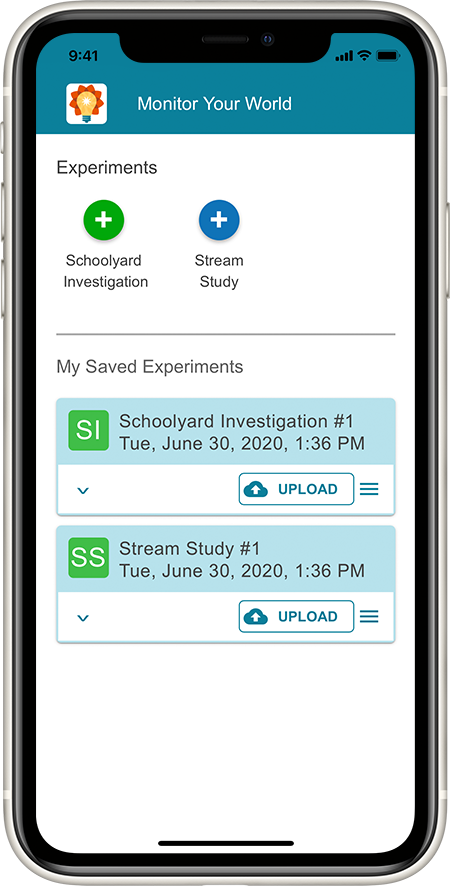 The Monitor Your World app works in conjunction with a SensorTag sensor to monitor the humidity, temperature, and light of the atmosphere and a low-cost water testing kit. This enables students to evaluate their environment near their schools and allow them to collect and upload their own data and pictures.
The Monitor Your World app works in conjunction with a SensorTag sensor to monitor the humidity, temperature, and light of the atmosphere and a low-cost water testing kit. This enables students to evaluate their environment near their schools and allow them to collect and upload their own data and pictures.
Students use the Monitor Your World app to learn about the various characteristics of their local environment. Teachers work with students to explain how these properties affect the surroundings in various ways.
Features
- Bluetooth connection from a SensorTag device to app with iPad 3 or later, iPhone 4S or later, or Android device
- Tracking of four sensors, including humidity, temperature, soil moisture and light
- Offline data collection, where students can be far from the school network to capture data and photos, then upload their data when they return
About the WATERS Project
The Watershed Awareness using Technology and Environmental Research for Sustainability (WATERS) project is developing and researching a student-centered, universally accessible curriculum for teaching water concepts and water career awareness. The project is applying principles from Universal Design for Learning (UDL) to create a powerful, scalable approach to water learning open to all students. By providing flexibility in information presentation and student responses, reducing barriers in instruction, and offering appropriate supports and challenges, the WATERS project is paving a path to increased access to proven curricula and approaches that hold the potential to greatly increase awareness of and engagement with water concepts and career pathways in learners nationwide. Learn more at the project web page.
Please read our privacy policy.
Looking for Support?
Visit the Monitor Your World app support page for answers to frequently asked questions, or send an email to waters@concord.org.
This material is based upon work supported by the National Science Foundation under grant numbers DRL-1850051, DRL-1850060, and DRL-1849719. Any opinions, findings, and conclusions or recommendations expressed in this material are those of the author(s) and do not necessarily reflect the views of the National Science Foundation.

